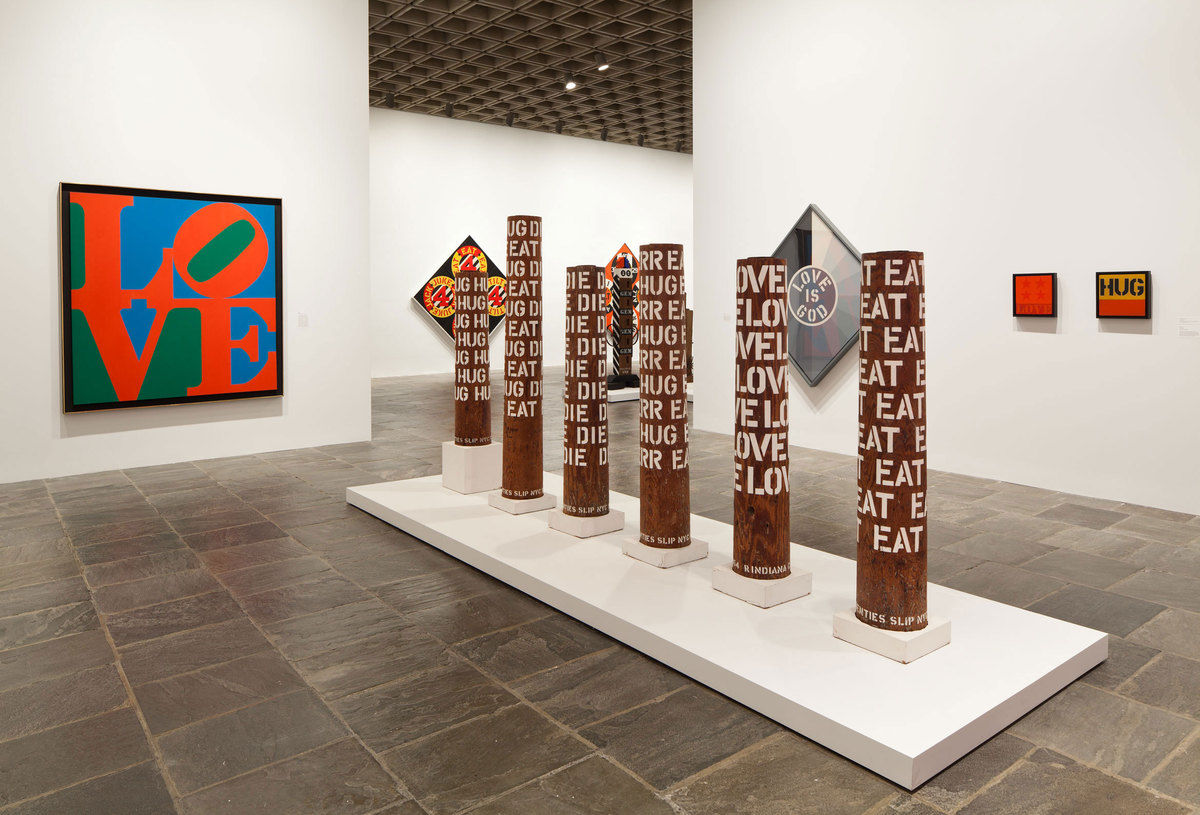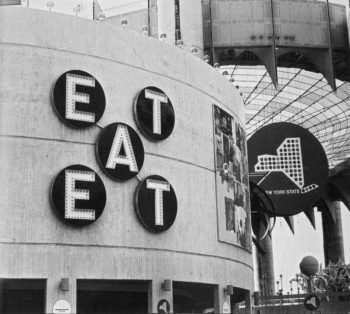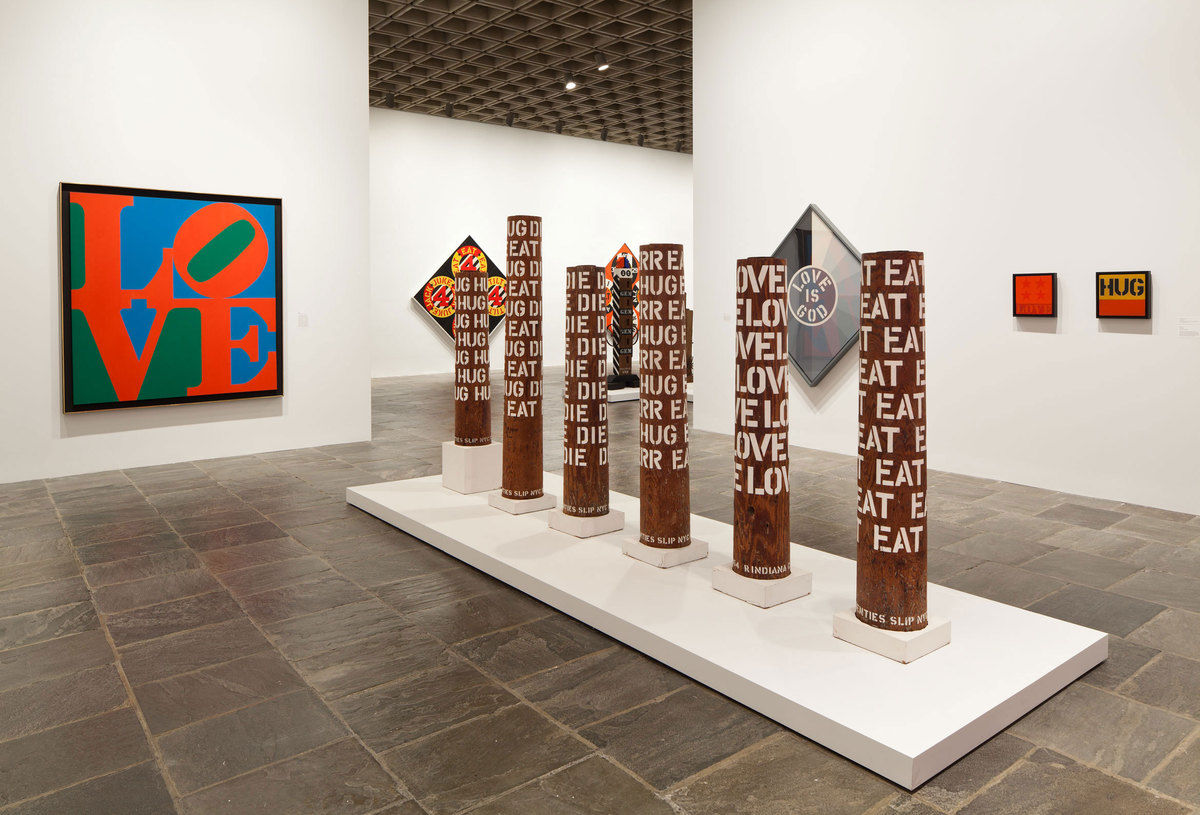[ad_1]

Installation view of “Robert Indiana: Beyond LOVE” at the Whitney Museum of American Art, New York, September 26, 2013–January 5, 2014.
© 2013 THE MORGAN ART FOUNDATION, ARTISTS RIGHTS SOCIETY (ARS), NEW YORK. PHOTOGRAPH BY SHELDAN C. COLLINS
Robert Indiana stands as one of the very few artists in history who has made a work of art that has gotten away from its maker and taken on an incredible, even improbable, life of its own. His iconic presentation of the word “LOVE,” which he created in 1964, ranks as one of the most popular artworks of the 20th-century—an utter crowd-pleaser that is instantly recognizable to millions, whether rendered as a giant metal sculpture or emblazoned across a T-shirt.
Such omnipresence would be the signal achievement for any artist, but Indiana was also one of the cornerstones of the Pop art movement of the 1960s, and his death on Saturday at the age of 89 is the latest marker of that pivotal chapter in art history slowly coming to a close. Other key members of that scene that have been lost recently include James Rosenquist last year at the age of 83, Marisol the previous year at the age of 85, and Marjorie Strider in 2014 at 83.
Indiana was notoriously perturbed about the degree to which his success with his “love” image overshadowed his other work, and—setting aside the degree to which he happily created various versions of the piece over the decades—he was not wrong about that. When the Whitney Museum organized a retrospective of his work in 2013, it was pointedly titled “Robert Indiana: Beyond Love.” It was revelatory.

Robert Indiana’s LOVE sculpture in Manhattan.
GEORGE HODAN/PUBLIC DOMAIN
The art that Indiana made is the art of the highway—big, bold signs, painted in crisp planes of bright colors, calibrated to be seen at a quick glance. But instead of advertising products, his paintings offer up short words that channel the dark urges of America and the shadowy parts of its history. A 1962 diptych reads, simply, “EAT DIE” in red and black capital letters. The American Sweetheart (1959–61) presents a laundry list of three-letter nicknames: “MAY,” “NAN,” “SUE,” “LIZ,” and 16 more. The Fair Rebecca (1961) presents those words—the name of a slave ship—inside a brightly colored circular insignia.
Indiana was born in New Castle, Indiana, as Robert Clark. (He referred to the name by which he became known as a “nom de brush.”) His mother was a waitress and his father was an office worker in the oil industry who pumped gas during the Depression before eventually working in the offices of Phillips 66 and, as Indiana recalled in a 1963 interview with the Archives of American Art, “that Phillips ’66’ sign . . . haunted most of my childhood, I suppose now I am just beginning to react to it. It was always an image which was very central in my whole life.”
“My whole life . . . was very much affected and bound up with that phenomenon called the Depression,” he added.
While living in Lower Manhattan on Coenties Slip in the 1950s, a location that Agnes Martin, Jasper Johns, Robert Rauschenberg, and Ellsworth Kelly (Indiana’s lover for a period) would also call home, Indiana discovered stencils once used to decorate ships. he adopted those stencils for his own practice, using them not only to make paintings but also to adorn remarkable totemic wooden sculptures that also bare shapes, fields of color, and even attachments, like wheels made of wood and steel.
Like much of Indiana’s contemporaneous work, these sculptures are scrappy and charmingly direct, with dashes of absurdist or sexual humor mixed with touching and intriguing allusions to relationships and even the cosmos. Hole (1960) sports that word against a bright yellow band and arrows pointed to a hole in the wood, with a protruding cylinder of wood down low. Mate (1960–62) features two wheels overlaying a circle of differently positioned numbers, seeming to prefigure Felix Gonzalez-Torres’s “Untitled” (Perfect Lovers), 1987–90.

Indiana’s EAT piece at the 1964 World’s Fair in New York.
CRYSTAL BRIDGES
An earlier version of Indiana’s most famous work was made with the letters F-U-C-K, as Jori Finkel noted in her New York Times obituary today. But it was the L-O-V-E version, printed soon after its creation, by the Museum of Modern Art, as a holiday card, that became an indelible part of the American consciousness, reproduced in myriad ways. On some days, people can be seen waiting in line to take a photo in front of a huge sculptural in Midtown Manhattan, as they do in Philadelphia, where John F. Kennedy Plaza is often called Love Park.
In 2008, in support of the presidential campaign of Barack Obama, Indiana minted another version spelling out “HOPE,” and an edition of that piece in metal sat outside his home on the island of Vinalhaven, Maine, about an hour ferry ride from Rockland and where he moved from New York in 1978.
Perched on the roof of the Farnsworth Art Museum is Indiana’s contribution to the 1964 World’s Fair in New York—a giant sign made out of 400 blinking lights that has the word “EAT” appearing twice, crossing itself diagonally and sharing a central A.
As the now-legendary story goes, on the first day it was displayed on the outside of the New York Pavilion, which was designed by Philip Johnson (an Indiana supporter who donated his work to MoMA), it attracted hordes of people looking for food, so the organizers turned it off and after the fair went into storage. (As it happens, Indiana said that the piece was informed by his mother’s waitressing at diners.) In 2009, when the Farnsworth was making plans to display it as part of an exhibition, Indiana told the Associated Press that when it was finally installed “on the roof of the Farnsworth and I see it for the first time that will be one of my most exciting days in Maine and one of the most exciting days of my life.”
Back in 1963, before the work’s display at the World’s Fair, Indiana mulled in the AAA interview what might happen when it was activated. “I’m sure they’ll practically riot against it,” he said, before admitting, “I don’t know, I think the days when people used to throw stones at things are probably gone now.” His interviewer, Richard Brown Baker, suggested that it “might lead to further architectural commissions.”
“Given the arbitrariness of my design, it’s not going to be too ingratiating,” Indiana responded. “As I said, there are thousands and thousands of ‘Eat’ signs all over the country, so people are not going to be struck with my originality.” But, he noted, “there’ll probably be more reproductions [of] this, and more coverage in the press than on anything that I might have done otherwise.” Probably true, but that record would soon be broken.
[ad_2]
Source link

